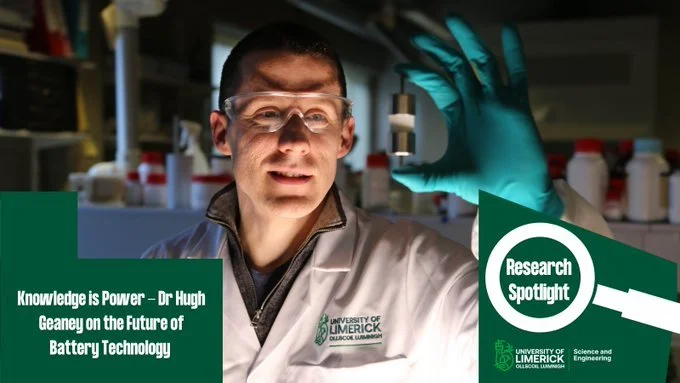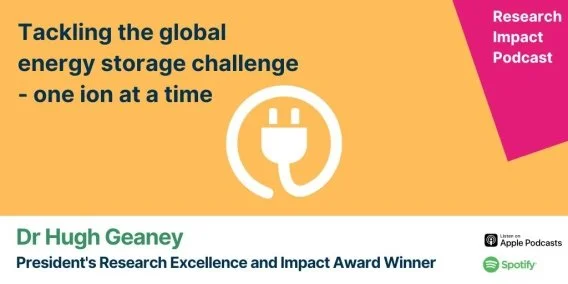Research Approach
The overall approach of the Geaney group is to combine materials design and synthesis expertise with state of the art characterization and electrochemical testing, to generate mechanistic understanding of energy storage processes. The research is focussed on high capacity active materials, which often come with complicated capacity fade mechanisms. Investigating and mitigating these performance challenges is key to these materials being practical in future energy storage applications.
About the Group
Hugh is an Associate Professor in the Department of Chemical Sciences in UL and the research group is based in the Bernal Institute in UL. The group is part of a multi-PI collaborative lab environment the ‘battery and nanomaterials lab’ with state-of-the-art materials synthesis and electrochemical testing facilities. Bernal is home to a range of large-scale materials characterization tools, making it a one-stop shop for battery materials development. Hugh is co-director of the AMPEiRE research centre, an interdisciplinary research hub focussed on energy related materials development.
Click pictures for links to content
Video Presentations & Podcasts
Research Week 2025
Research Week 2023 Launch Event
Bernal Research Seminar
Scanlon Seminar Series
Research Areas
Silicon & Germanium Anode Development for Li Batteries
Silicon & Germanium nanowires have been used extensively in the group as a model system for investigating fundamental Li-ion charge storage mechanisms within. We have also been working on upscaling the growth of the materials and using them in new applications, such as metal anode batteries.
Large-Scale Collaborative Projects
The University of Limerick is involved in Horizon Europe projects on battery development and has coordinated 2 EU projects. SiGNE is examining Si/Graphite anodes for next generation Li-ion batteries. UL are investigating upscaling of the anode material using wet chemical approaches, for testing at TRL 6 and validation for EVs.
Sodium-ion Battery Development
Sodium is 1000x more common in the Earth’s crust than Li and as a result, it is highly attractive for large scale stationary storage. In the Geaney group we are investigating anode materials for Na-ion batteries. We are focused on a) the mechanism of Na alloying compared to Li alloying and b) the development of Earth abundant active materials.
Metal anode batteries are attractive for increasing energy density values beyond state of the art Li-ion. They are hampered by dead metal and dendrite formation, which lead to rapid performance fade and serious safety concerns. In the group we are working with a range of hosted and modified anode architectures that allow uniform metal deposition over extended cycles. These offer potential for increasing the energy densities of future batteries.
Li Metal Anode Systems
Earth Abundant Active Materials
To move fully away from fossil fuels, sustainable materials need to be produced for energy storage applications. In the Geaney group we are investigating sustainable materials that use Earth abundant elements like Fe,Cu,O and S.
Alloying Mode Anode Development
The SAND project funded by Science Foundation Ireland is investigating the use of inactive/active core/shell architectures for Li-ion batteries. The project is specifically addressing aspects of synthesis, focused on preparing tunable structures via wet chemical approaches.













